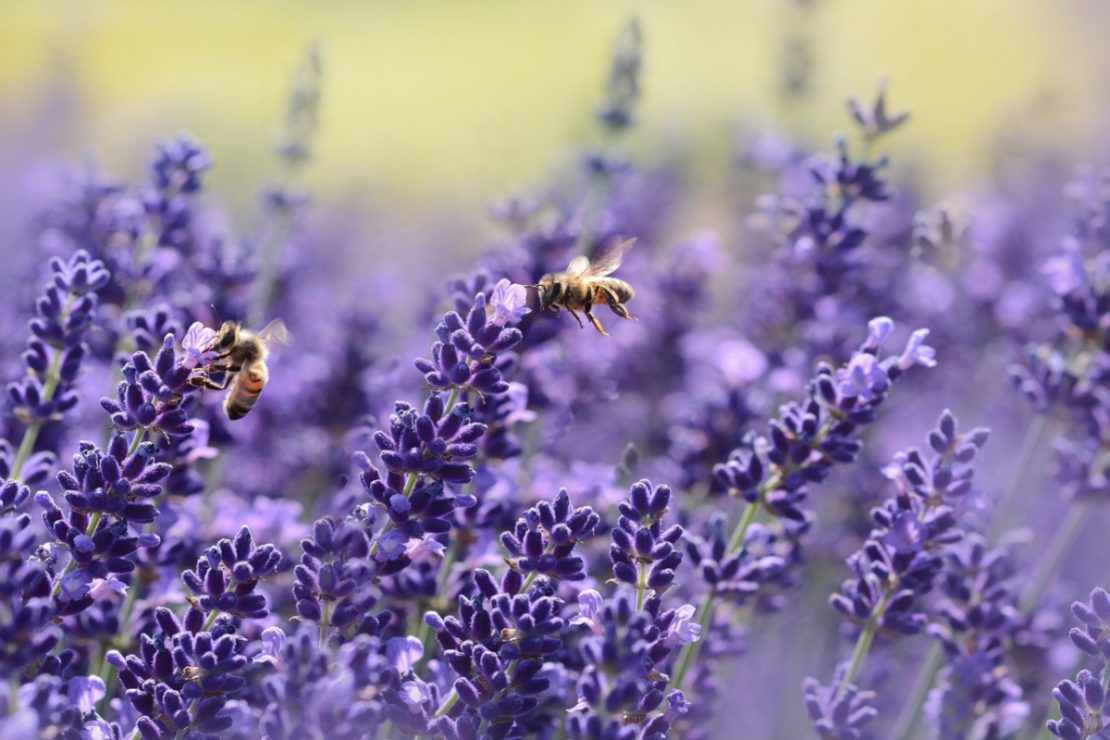
Bee Propolis: The Honey Bee’s Secret To Hive Health
We all know that honey bees create delicious honey and beautiful wax, but they also make a fantastic substance called bee propolis. Like honey, propolis offers a myriad of scientifically researched benefits.
Propolis is a sticky “bee glue” that is used inside honey bee colonies. Composed of tree resins, wax, essential oils, pollen, and other components, propolis seals cracks and creates an aseptic envelope that keeps crowded colonies healthy.
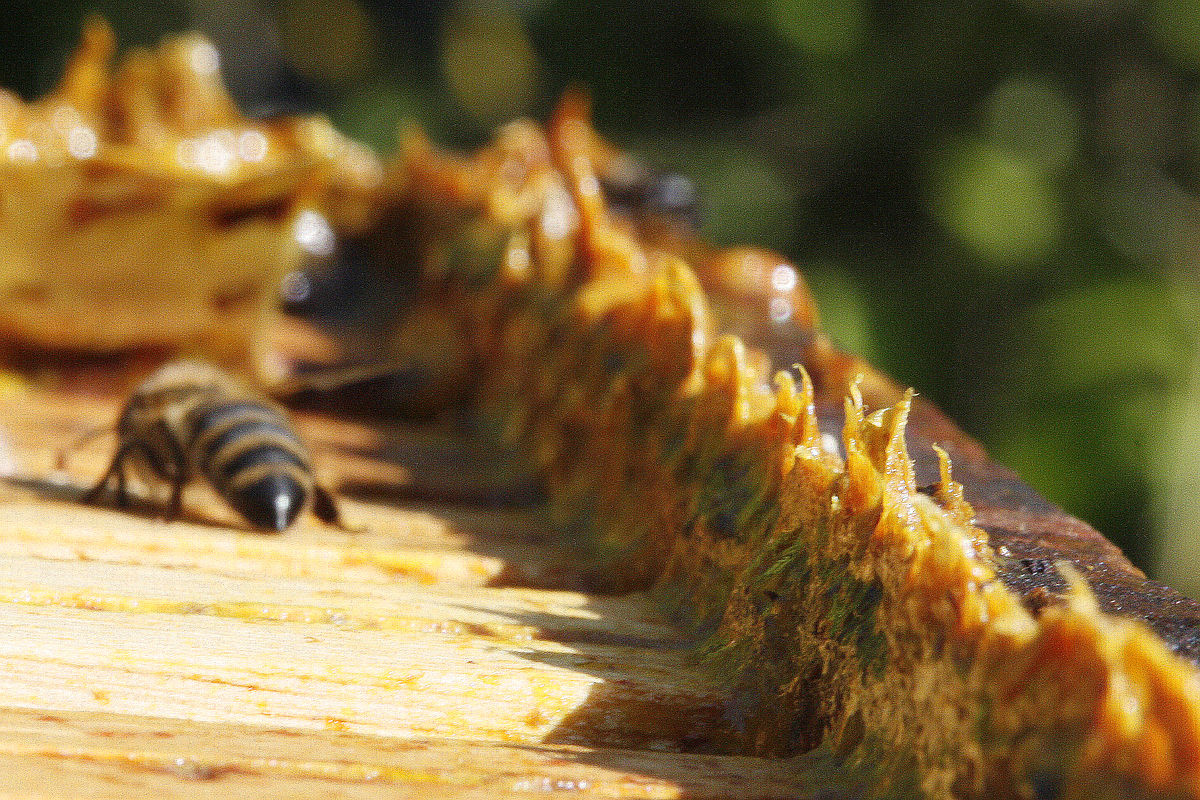
What Is Bee Propolis?
Propolis is a dark-colored, sticky substance that honey bees use to seal cracks, waterproof the inside of the hive, and create an antiseptic propolis envelope.
Honey bees are considered a superorganism—no individual bee can make it on its own; instead, it is the collective work of the colony that is needed to survive. In nature, honey bees create colonies (or nests) inside of tree hollows. These spaces are roughly the same volume as two 5-gallon buckets (30-60 L). These small spaces can be the home to 20,000-30,000 honey bees. With so many individuals in such a small space, disease prevention and immune health are paramount. The propolis envelope serves as an antimicrobial layer, which benefits both individual immunity and colony health.
Propolis is composed mostly of resin, wax, essential oils, pollen, and other compounds. The composition of propolis will vary based on geographical location. The plants that are growing where I live may not be the same plants where you are. Because of this, more than 300 compounds such as flavonoids, polyphenols, phenolic aldehydes, sesquiterpene quinines, coumarins, amino acids, steroids, and inorganic compounds have been identified in propolis samples.
The majority of propolis (50%) is resin. Resin is collected from trees, bark, and leaf buds from conifers, poplars, birches, willows, and native plants. Plants secrete resin to protect young leaf buds from infection caused by pathogens, and to keep herbivores at bay.
Honey bees collect this resin on warm days. After biting a chunk of resin off of the plant, she chews the resin to soften it further and then places the resin in the pollen baskets on her legs to take back to the colony. Back at the colony, her sisters remove the resin from her pollen baskets and combine the resin with stomach enzymes and other substances to create propolis. The propolis is then used to seal cracks and create a propolis envelope.
The average honey bee colony produces around 150–200 g of propolis per year.
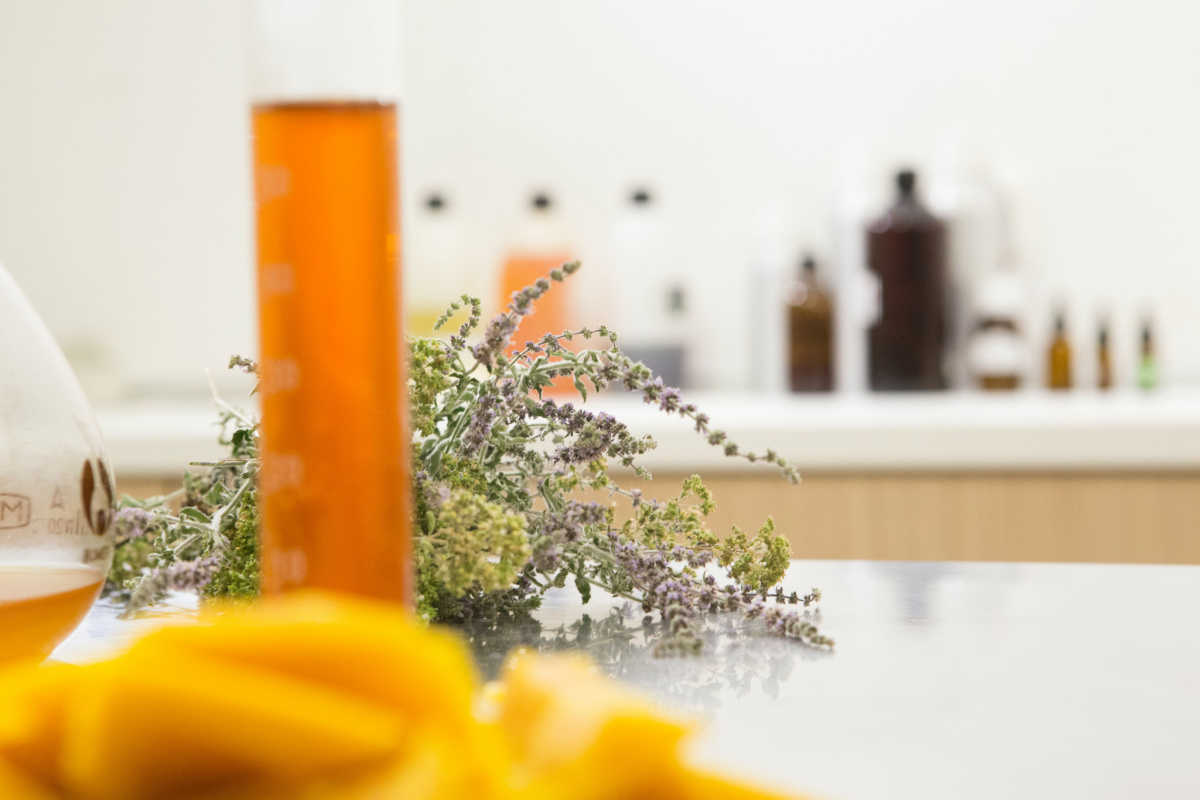
Propolis’s Rich History
Propolis has been used for centuries for its health benefits, and records show that the ancient Egyptians, Persians, Romans, Jews, and Greeks used propolis.
The ancient Jews called propolis tzori and used it as medicine. Tzori is mentioned many times in the Old Testament and is nearly indistinguishable from Balm of Gilead.
The Bible explains that the Balm of Gilead was a gift from the Queen of Sheba given to King Solomon. This balm was made from various resins from poplar trees. The Balm of Gilead was also one of the special incense used twice daily in the Holy Temple in Jerusalem. There is also a Balm of Gilead tree, or Balsam Poplar, that is well known for it’s resinous buds that have healing properties.
Ancient Greeks created a perfume called polyanthus that utilized propolis. Hippocrates is said to have used propolis to cure wounds and ulcers. Pliny the Elder, a famous Roman, reported that propolis cured many ailments.
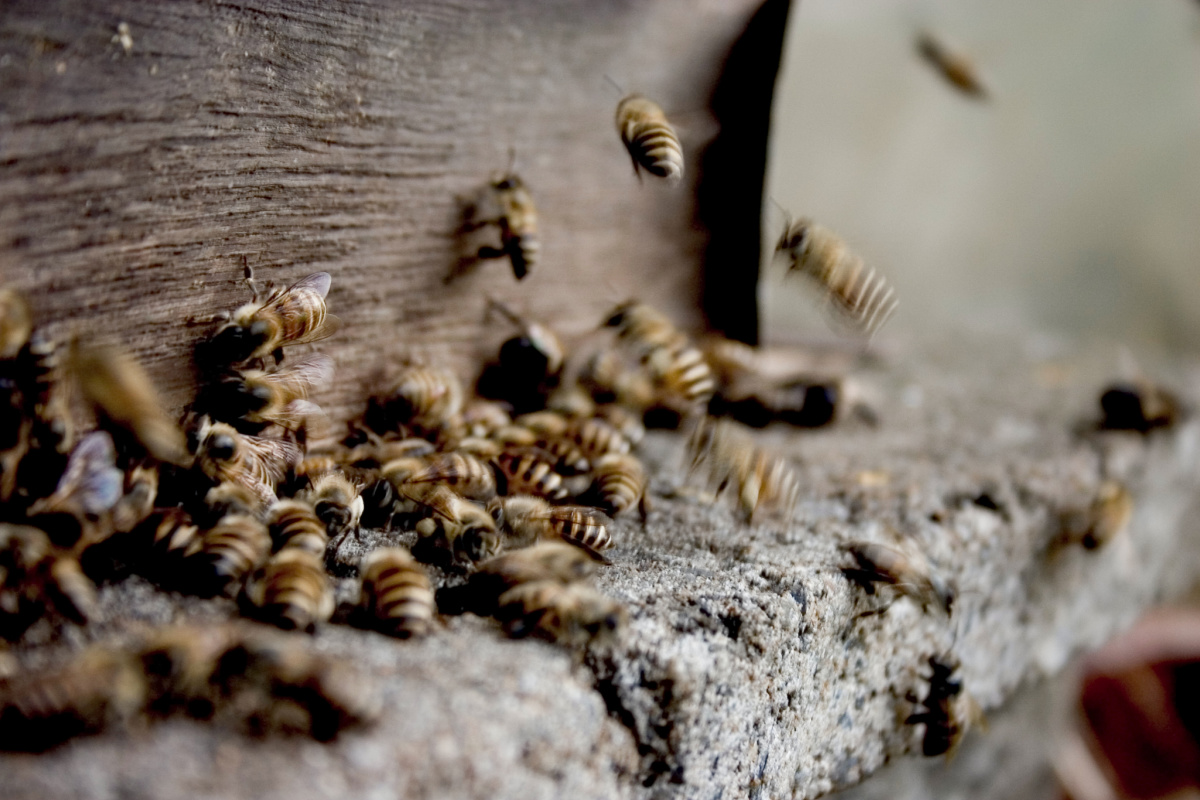
Health Benefits of Propolis
Several studies have evaluated the compounds of propolis and their efficacy in working with various health issues (Anjum et al., 2019).
- Antibacterial- effective against Enterococcus spp., Escherichia coli, and Staphylococcus aureus
- Antifungal- propolis is effective against several fungi including several Candida spp.
- Antitumoral- Components in propolis such as caffeic acid phenethyl ester and artepillin C were found to stop the spread and even destroy tumor cells.
- Antiprotozoal- propolis has been found to be effective against giardiasis, Chagas disease, leishmaniasis, trichomoniasis, and toxoplasmosis.
- Anti-inflammatory- flavonoids in propolis have anti-inflammatory properties. These were found to improve arthritic inflammation in rodent studies.
- Hepatoprotective- propolis can increase antioxidant activity against mercury-induced toxicity and liver damage from acetaminophen use.
- Antioxidant- Aqueous propolis extracts protect the body from and remove free radicals due to the high polyphenol contents.
- Antiviral- Propolis prevents viruses from entering the cells and prevents viral replication. Propolis has been shown to be effective against genital herpes infection (HSV-2), herpes simplex virus (type 1), and influenza virus A1 Hong Kong (H3N2).
- Anticancer- Propolis contains flavonoids, which are effective against cancers. Propolis has been shown to stop breast cancers, lung cancer, oral cancer, esophagus, stomach, colorectal, prostate, and skin cancer.
- Oral health– Propolis ethanolic extracts can decrease the bacteria in the mouth, decrease gum inflammation, and repair dental pulp.
- Wound healing– Propolis has the ability to repair tissues and prevent wound infections.
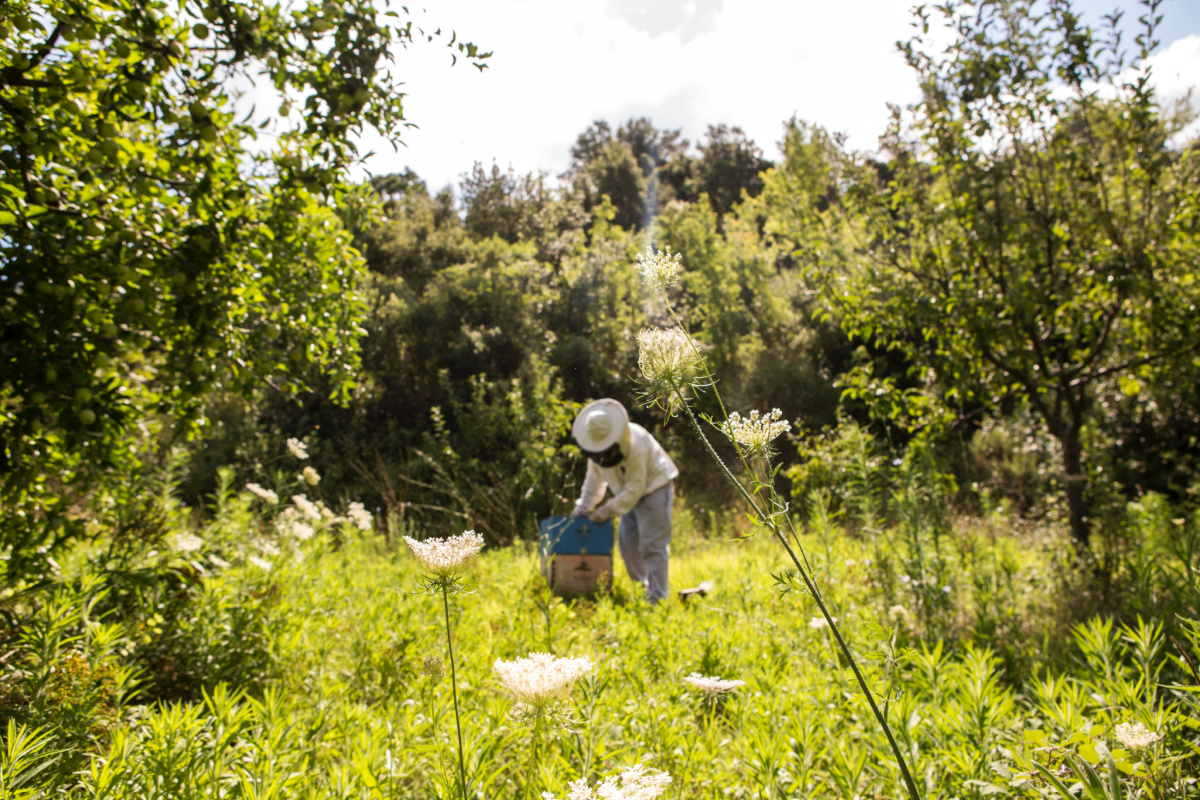
How To Obtain Propolis
If you are a beekeeper, you are probably already very familiar with propolis. During your inspections, propolis can be scraped off woodenware and saved for later use. A propolis trap can also be added under the inner cover.
If you are not a beekeeper, propolis can be obtained from your local beekeeper. To find a beekeeper, try your Farmers Market, or reach out to your nearest Beekeeping Club. If you are still unsuccessful, online shops and Etsy may be an option. Propolis extracts are also available at health food stores.
You can also purchase toothpaste and mouthwash that contain propolis extract.
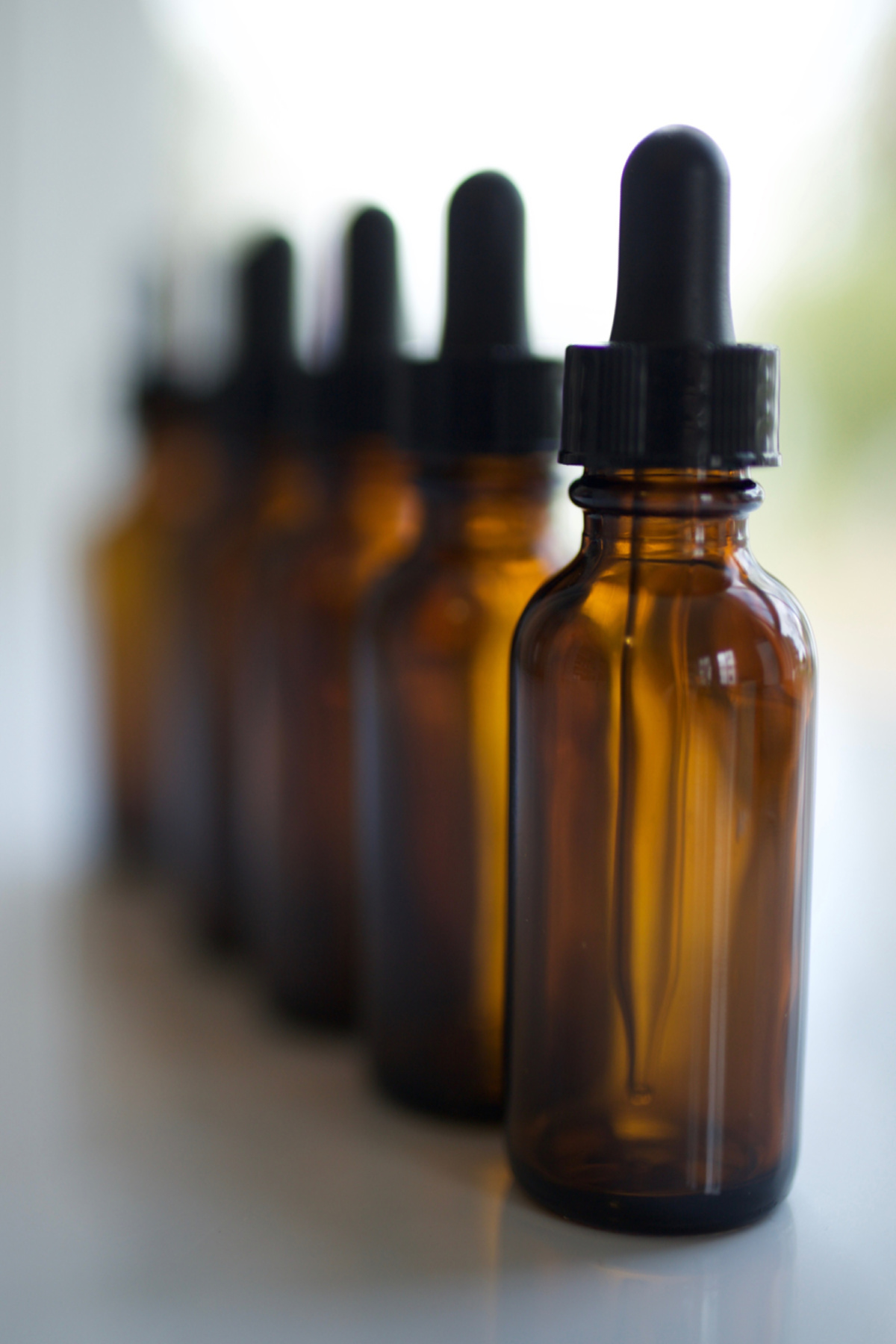
How To Use Propolis
Propolis tinctures can be made by dissolving propolis in clear grain alcohol (such as 75+ proof vodka or Everclear). Simply combine two parts propolis (by weight) to nine parts grain alcohol in a glass jar. Put the lid on and shake, then store the jar in a dark place. Shake the jar a few times a day for two weeks. After two weeks, strain the mixture with a coffee filter and store the finished tincture in a dark place.
The propolis tincture can be taken by mouth, added to mouthwash, applied to wounds or bandages, applied to cold sores, and added to hot tea to soothe sore throats.
Propolis Safety
Do not use propolis if you take blood thinners, as propolis can increase the risk of bleeding (Ohkura et al,. 2020).
Stop propolis at least two weeks before any planned surgery as it can slow blood clotting.
Propolis should not be used by those with a known allergy to bee stings, beeswax, or pollen.
About The Author
Nicole Gennetta is a Master Beekeeper (Cornell University), Certified Colorado Master Gardener, and Paramedic in Southern Colorado. She has a passion for learning and teaching others. Nicole is also the founder of Heritage Acres Market and the Backyard Bounty podcast, which provides helpful information for new and aspiring hobby farmers.
———————————————————————————————————————————————-
Watch Nicole Gennetta of Heritage Acres Market and Heather Irvine of Herbal Academy talk about herbalism, bees, and herbs you can grow that are good for animals and good for us too in their video interview on YouTube or on Nicole’s own Backyard Bounty podcast!
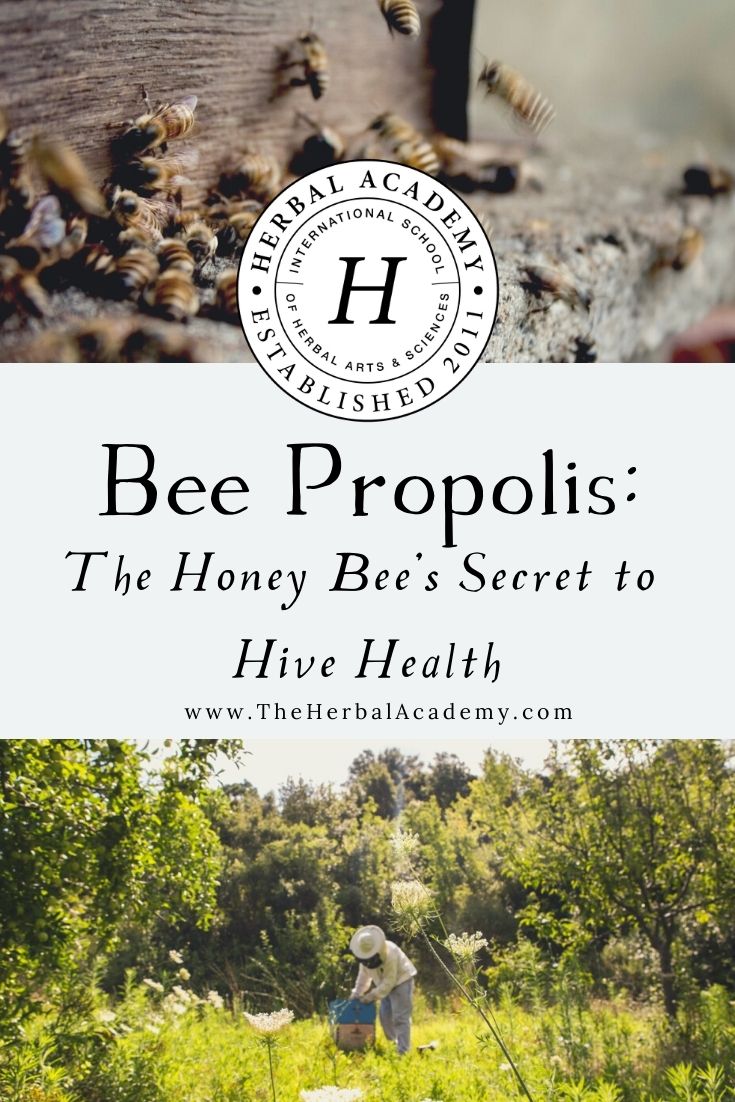
REFERENCES
- Anjum, S. I., Ullah, A., Khan, K. A., Attaullah, M., Khan, H., Ali, H., Bashir, M. A., Tahir, M., Ansari, M. J., Ghramh, H. A., Adgaba, N., & Dash, C. K. (2019). Composition and functional properties of propolis (bee glue): A review. Saudi journal of biological sciences, 26(7), 1695–1703. https://doi.org/10.1016/j.sjbs.2018.08.013
- Borba, Renata & Klyczek, Karen & Mogen, Kim & Spivak, Marla. (2015). Seasonal benefits of a natural propolis envelope to honey bee immunity and colony health. The Journal of experimental biology. 218. 10.1242/jeb.127324.
- Bosua, H.J., Nicolson, S.W., Archer, C.R. et al. Effects of cage volume and bee density on survival and nutrient intake of honeybees (Apis mellifera L.) under laboratory conditions. Apidologie 49, 734–746 (2018). https://doi.org/10.1007/s13592-018-0595-x
- Castaldo, S., & Capasso, F. (2002). Propolis, an old remedy used in modern medicine. Fitoterapia, 73 Suppl 1, S1–S6. https://doi.org/10.1016/s0367-326x(02)00185-5
- Farooqui, T., & Farooqui, A. A. (2012). Beneficial effects of propolis on human health and neurological diseases. Frontiers in bioscience (Elite edition), 4, 779–793. https://doi.org/10.2741/418
- Khalil M. L. (2006). Biological activity of bee propolis in health and disease. Asian Pacific journal of cancer prevention: APJCP, 7(1), 22–31.
- Kuropatnicki, A. K., Szliszka, E., & Krol, W. (2013). Historical aspects of propolis research in modern times. Evidence-based complementary and alternative medicine : eCAM, 2013, 964149. https://doi.org/10.1155/2013/964149
- Ohkura, N., Maruyama, K., & Kihara-Negishi, F. (2020, February). Possible antithrombotic properties of propolis. Journal Of Apitherapy. https://doi.org/10.5455/ja.20190807071847
- Pasupuleti, V. R., Sammugam, L., Ramesh, N., & Gan, S. H. (2017). Honey, Propolis, and Royal Jelly: A Comprehensive Review of Their Biological Actions and Health Benefits. Oxidative medicine and cellular longevity, 2017, 1259510. https://doi.org/10.1155/2017/1259510









